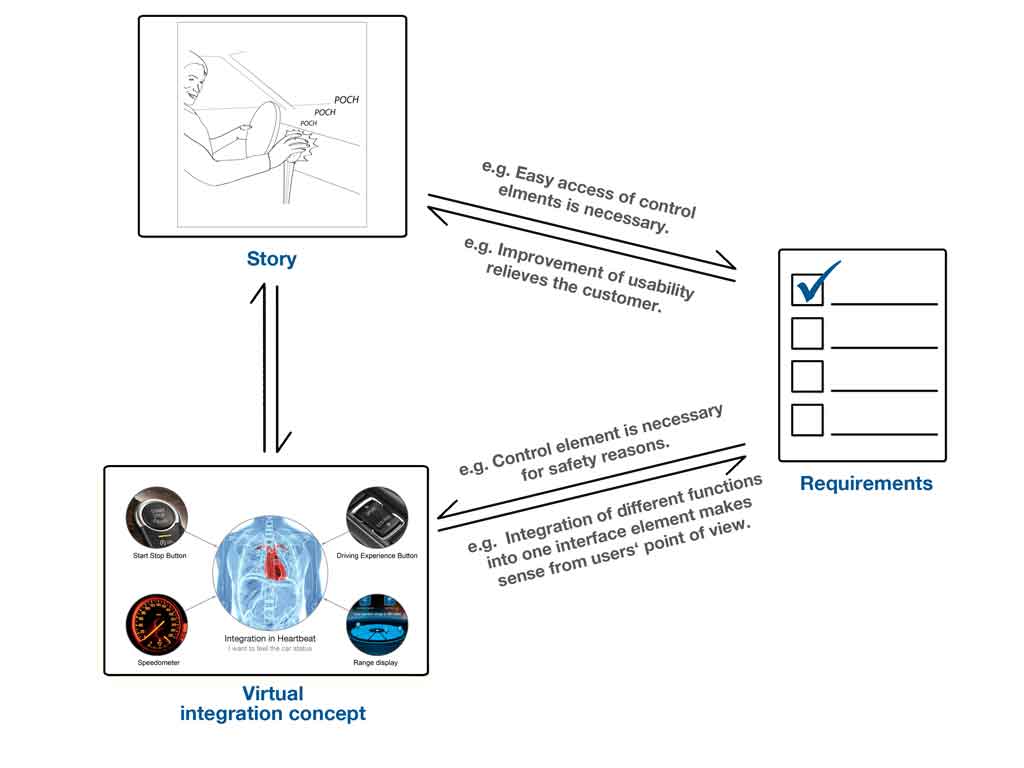Identify Qualitative Requirements.
Translate the story into first technical requirements.
Why.
It is necessary to transform the story into a real product. Therefore, convert the story with its characters, use case descriptions and customer requirements into reliable requirements that are understandable for engineers.
What.
Translate the story into requirements in a continuous and iterative process and incorporate existing requirements from various sources. In addition, compare all new versions of the virtual integration concept with these requirements.
How.
Story (incl. customer profiles, use cases and customer requirements), virtual integration concept, already present requirements (legislation, ergonomics, usability and other framework conditions).
Translate the story into technical requirements. This way, the story is captured in form of solid criteria which are understandable for engineers and can be tested during the development stage and therefore do not get lost during the course of the development process. The fulfillment of these quality critical requirements (Critical To Quality - CTQs) is a basic condition for the emergence of a postitive user experience.
A comparison of additional requirements with the story is now required. If necessary, adjust the story accordingly. This does not yet refer to the technical feasibility but requirements from the areas: legislation, ergonomics, usability and other framework conditions.
In addition to the story, the virtual integration concept also plays a decisive role in the development of requirements. Specify and document requirements that emerge from the integration on the basis of customer motives. Later, implement the concept ideas based on the same customer needs.
Just like with the story creation, take the present requirements from other areas (legislation, ergonomics, usability and other framework conditions) into account during the development of the virtual integration concept.
Qualitative technical requirements.
Insights
- Integrate the specification of technical requirements into the process of creating positive experiences.
- Fulfilling technical requirements can be a KO-criterion for potential user experiences. The requirements are derived in part from the story and the conceptual integration and flow back into the story and concept creation.
- Synergies as well as conflicts may result between classic technical requirements and UX-potentials. The requirement manager monitors and mediates during this process.
- Technical requirements and story complement one another and are therefore used at the same time during the further stages of the development process.
References
Lindemann, U. (2009): Methodische Entwicklung technischer Produkte - Methoden flexibel und situationsgerecht anwenden. Berlin, Heidelberg: Springer. Pyzdek, T. (2010): The Six Sigma handbook – a complete guide for green belts, black belts, and managers at all levels. New York: McGraw-Hill,






_en.jpg)
